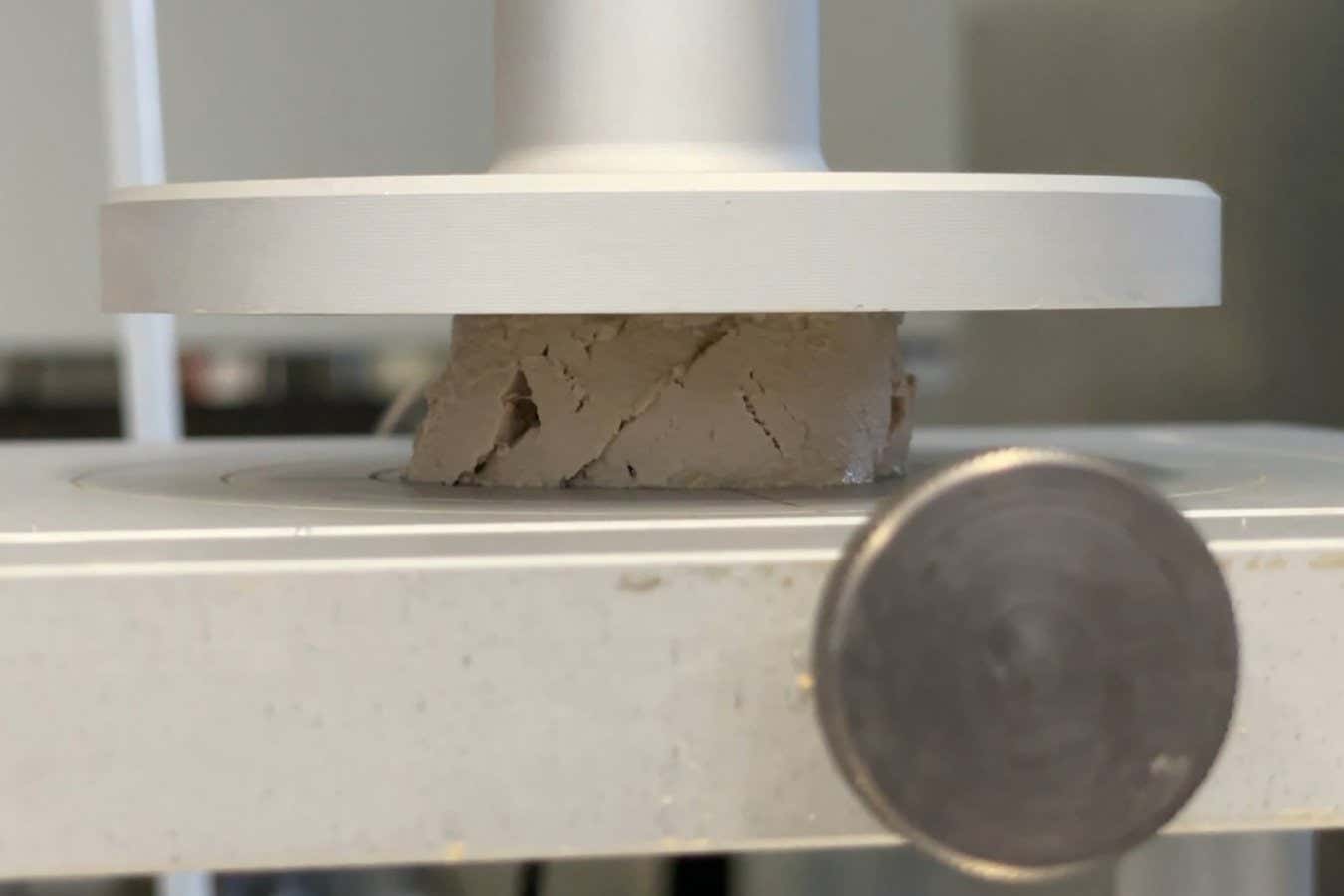Scientists have replicated the luxurious mouthfeel of foie gras using the liver and fat of ducks reared and slaughtered normally, avoiding the controversial techniques involved in traditional production
By Matthew Sparkes
25 March 2025
The researchers’ alternative foie gras undergoing a stress test in the lab
Thomas A. Vilgis
The French delicacy foie gras could be made more ethically thanks to a technique that replicates the way fats are metabolised in force-fed birds, although the process still depends on farmed animals.
Foie gras is made from the liver of a duck or goose that has been force-fed via a tube. As a result of this process, known as gavage, the organ swells to as much as 10 times its usual volume as the animal stores the excess fat.
Read more
Lab-grown meat could be 25 times worse for the climate than beef
Advertisement
According to researchers, the experience of eating foie gras depends not only on its high fat content but also on the microscopic distribution of that fat.
Now Thomas Vilgis at the Max Planck Institute for Polymer Research in Mainz, Germany, and his colleagues have developed a new process that creates the same texture in the liver from a normally reared and slaughtered duck or goose, using fat from the same bird.
“I’m a big fan of foie gras,” says Vilgis. “I was just fascinated by this by this mouthfeel – it was so different from other pâtés – and so I asked myself, what is it?”
